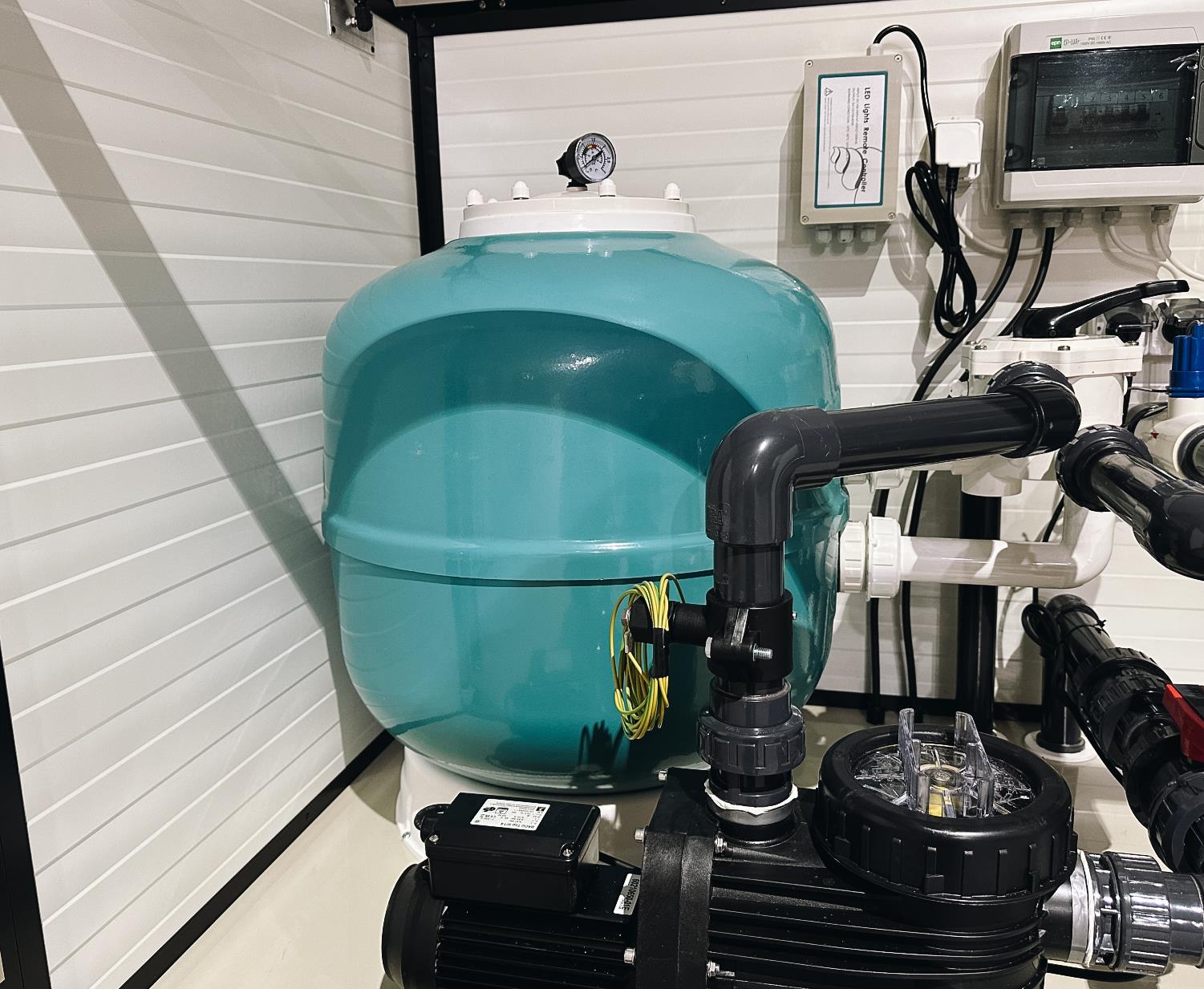
Maintaining the correct pH level in a garden pool is crucial for ensuring clean and comfortable swimming conditions. Proper pH levels affect the effectiveness of disinfectants and help prevent unpleasant odors and skin irritations. The ideal pH range for pool water is between 7.2 and 7.6.
To keep the pH level in check, follow these steps:
By following these guidelines, you can effectively maintain the pH level in your pool, enhancing both comfort and safety.
The pH level of pool water is a key factor influencing water quality and swimming comfort. Knowing how to measure and adjust the pH is essential. Here’s a guide on how to check and maintain the optimal pH level.
You can measure pool water pH using various tools, including chemical testers, electronic testers, or test strips. Here’s an overview of each method:
Regularly checking the pH level allows you to make prompt adjustments if needed. The ideal pH range for pool water is 7.2 to 7.6.
Adjusting pH Levels:
Regular checks and adjustments ensure water cleanliness, the effectiveness of disinfectants, and help prevent unpleasant odors and skin irritation.
Regulating the pH level of pool water is essential for ensuring high water quality and a pleasant swimming experience. Proper pH balance affects the effectiveness of disinfectants, prevents unpleasant odors, and reduces skin irritation. Understanding why pH regulation is important and how to maintain the ideal pH level in a garden pool is key.
Maintaining Proper pH Levels in Pool Water
A garden pool with a proper pH level (7.2-7.6) offers several benefits:
Water Stability: Correct pH helps prevent water discoloration and scaling on pool surfaces.
To maintain the appropriate pH level in your pool, follow these guidelines:
In summary, proper pH regulation is crucial for maintaining water quality and ensuring a comfortable swimming experience. Regular pH testing and the use of appropriate chemicals will help you keep your garden pool at the ideal pH level.
The pH of pool water measures its acidity or alkalinity, which affects swimming comfort and the effectiveness of disinfectants. It is important to know how to raise the pH when it is too low and what to do if the pH is either too high or too low.
To increase the pH of pool water, use products containing sodium hydroxide or potassium hydroxide. Follow these steps:
For high pH levels, use chemicals like sulfuric acid or muriatic acid:
pH Minus and pH Plus are products designed to help adjust the pH level of pool water. To use these products correctly, follow these instructions:
By using pH Minus and pH Plus as directed, you can maintain the appropriate pH level in your pool, which contributes to a comfortable swimming experience and effective disinfection.
To measure the pH of pool water, you can use various types of pool testers, such as pH testers, manual testers, or electronic testers. Here’s how to conduct the test correctly, following the manufacturer’s instructions:
Regularly testing the pH of pool water allows you to quickly address any deviations from the ideal range and maintain proper pH levels.
Need assistance with testing or adjusting pool pH?
If you have questions about accurately testing the pH of your pool or how to lower the pH level effectively, remember that our service department is here to help. Contact us, and our advisors will assist you with any queries or concerns.
To effectively purify pool water and maintain the correct pH balance, selecting the appropriate disinfectants is crucial. Here are some popular options:
Selecting the right disinfectants for your pool will help you maintain the correct pH levels, ensuring both swimming comfort and effective water purification.
The role of pool chemistry involves adding specific treatments to pool water that influence its acidity and the effectiveness of disinfectants. Chemical products, such as pH Minus, pH Plus, and disinfectants, alter the water’s acid-base balance, impacting both swimming comfort and the efficiency of water treatment.
When selecting the appropriate chemical treatments for your pool, it’s important to consider their composition and how they work to maintain the optimal water acidity and ensure effective pool water management.
The level of chlorine in pool water is closely related to its pH. To maintain the ideal pH and chlorine levels, follow these guidelines:
By following these practices, you can effectively manage the pH and chlorine levels in your pool water, ensuring a comfortable swimming experience and optimal disinfection.

Are you considering buying a swimming pool? Or do you already have one in your garden? Our newsletter is your source for interesting facts, discounts, and practical pool tips!





